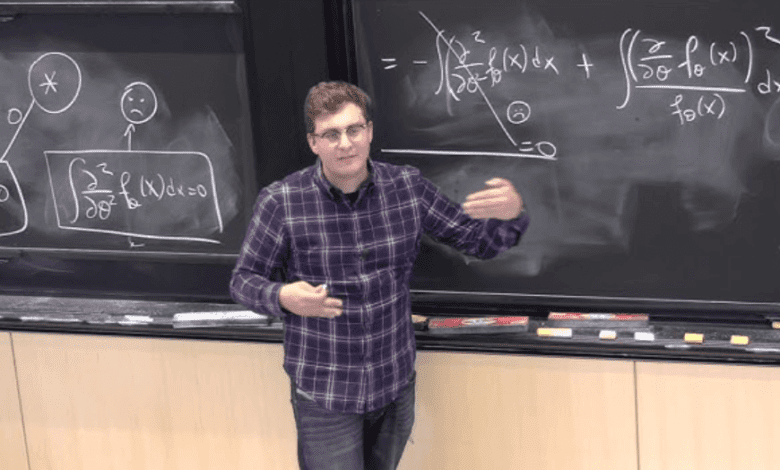Maximum A Posteriori Estimation: Navigating the Bayesian Map to the Peak of Certainty

In the world of data, uncertainty is like fog on a winding road. You can’t see everything clearly, but you still need to steer in the right direction. Bayesian inference acts like a GPS—it uses prior knowledge and current evidence to update your belief about where you are. Within this landscape, Maximum A Posteriori (MAP) estimation is the compass that points to the most probable position—the mode of your posterior distribution. It’s not about knowing everything but about finding the most believable answer given what you already know and what you’ve just observed.
The Mountain Metaphor: Searching for the Peak of Belief
Imagine you’re a mountaineer surrounded by mist-covered peaks. Each summit represents a different possible answer, and the altitude symbolises how likely that answer is. The MAP estimate is the highest peak you can see—the point where your belief reaches its maximum based on both prior experience and new clues.
Traditional estimation methods like Maximum Likelihood focus only on the evidence at hand—like staring at a map without considering yesterday’s route. MAP estimation, however, blends your past knowledge (the prior) with fresh data (the likelihood), forming a new landscape—the posterior. The peak of this combined terrain tells you the most credible parameter value. This makes it an indispensable concept taught in every Data Scientist course in Mumbai, especially when students begin exploring the depth of Bayesian thinking.
The Logic Behind the Compass: How MAP Estimation Works
In mathematical terms, MAP estimation seeks the parameter value that maximises the posterior probability. If θ\thetaθ represents the parameter and DDD the data, the goal is:
θ^MAP=argmaxθP(θ∣D)\hat{\theta}_{MAP} = \text{argmax}_\theta P(\theta | D)θ^MAP=argmaxθP(θ∣D)Using Bayes’ theorem, this can be rewritten as proportional to:
P(θ∣D)∝P(D∣θ)P(θ)P(\theta | D) \propto P(D | \theta) P(\theta)P(θ∣D)∝P(D∣θ)P(θ)The formula shows the harmony between two forces—what the data says and what you already believe. Unlike the Maximum Likelihood Estimate (MLE), which ignores prior information, MAP introduces a philosophical elegance: it balances optimism (data-driven inference) with wisdom (previous knowledge). In essence, it respects both your current evidence and your experience.
When explained through storytelling, learners find this bridge intuitive. It’s like updating your travel plans after seeing weather reports—you still consider your itinerary, but adjust it according to new information. No wonder educators emphasise this topic in advanced modules of the Data Scientist course in Mumbai, helping learners connect mathematical abstraction with real-world reasoning.
See also: Chrome Music Lab: Bringing Music Education to the Digital Age
From Data to Decisions: MAP in Action
MAP estimation shines in practical situations where uncertainty is the rule, not the exception. Think of spam detection: the algorithm doesn’t just look at the incoming email—it remembers what “spam” looked like in the past. The prior represents that memory, while the likelihood captures the evidence from the current message. Together, they create a refined judgment.
Similarly, in image restoration, when pixels are corrupted by noise, MAP estimation helps reconstruct the most probable image. It integrates what is expected of natural images (the prior) with the observed data. The result? A cleaner, more believable picture—both literally and mathematically.
The beauty of MAP lies in its pragmatism. It doesn’t demand perfection, only probability. It’s the kind of balance engineers, analysts, and statisticians strive for daily—combining prior models, domain intuition, and streaming data into one cohesive inference.
The Bias-Variance Balance: When Prior Meets Evidence
One of the subtler aspects of MAP estimation is its impact on bias and variance. Including a prior introduces bias but stabilises the estimate, especially when the data is limited or noisy. In contrast, MLE can swing wildly when evidence is scarce. MAP offers a middle ground—a Bayesian seatbelt that prevents the inference from veering off course due to randomness.
This principle has profound implications in fields like machine learning, where overfitting is a constant threat. Regularisation techniques such as Lasso and Ridge regression can be derived from MAP principles. Here, the prior acts like a leash, constraining model parameters to maintain generalisation. Thus, what begins as a theoretical concept becomes a cornerstone of robust predictive modelling.
Why MAP Matters in the Modern Data Landscape
As AI and automation reshape industries, decisions increasingly rely on probabilistic reasoning. Whether it’s self-driving cars predicting pedestrian movement or financial systems assessing credit risk, the art of updating beliefs from new evidence lies at the heart of intelligent systems. MAP estimation enables these systems to operate with measured confidence—anchored in prior understanding, yet adaptive to new realities.
For aspiring professionals, mastering MAP is not just about crunching equations but about adopting a mindset—one that accepts uncertainty and learns to reason through it. That’s why it stands as a vital pillar of Bayesian inference, and why any rigorous data science curriculum ensures learners encounter it not as a formula, but as a philosophy of inference.
Conclusion: The Bayesian Way of Seeing
In the grand narrative of data, MAP estimation represents more than a computation—it’s a worldview. It teaches us that truth is not absolute but conditional, shaped by both history and evidence. It’s a reminder that learning, whether by humans or machines, is an ongoing negotiation between what we know and what we discover.
When you think about your next decision—be it a business forecast, a model prediction, or even a career choice—remember the lesson of the Bayesian mountaineer: the best path forward lies where prior wisdom and present insight converge. In that union, you find the peak of certainty amid uncertainty—the essence of Maximum A Posteriori estimation.



